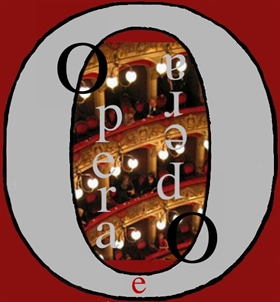Written by Natalia Di Bartolo–
And note the passion of Michelangelo Merisi, known as Caravaggio (1573-1610) for music; at his death, his possessions were found musical instruments: musical theme appears in many of his works.
And’ the case de “The lute player”; 94 cm.×119, oil painting on canvas, preserved in St. Petersburg, the Hermitage Museum. The picture is a poignant, almost melancholic beauty and creates an atmosphere that invites you to "enter" in the painting. The user can do this easily, using a diagonal plane, which shifts and rotates the center of attention, resulting in a play of light that converge with each other, from the marble wall. Within this space the artist places the player and bust on this model a shirt: within this space the "visitor" will meet face to face, the protagonist of the painting.

In the painting, albeit meditative, we find the characteristic themes of Caravaggio's youthful production: carefree youth, music and singing: never trivial, in the painting of genius, just as not indifferent is the attention to the rendering of details, with a usual, for Merisi, “under framework”with the presence of a still life itself, which shows great care (almost of Flemish ancestry) in the rendering of objects.
The young, probably absorbed in singing and pinch the strings of the lute, with his shirt open at the chest and a white canvas band tied in her hair, is a feminine beauty to the point that another of Caravaggio biographer Giulio Mancini, in describing another version of the painting, bought by cardinal Del Monte, mistook him for a girl.
However, beyond the key homosexual interpretations of beauty models emasculated in caravaggeschi of this period, it should be remembered that the exaltation of efebica beauty and harmony of song and music were part of the refined culture of the artist. It is questionable, therefore, the assiduous presence of Merisi "musical" environment in Rome, at that time, since youth was always looking for models for his paintings.
Cardinal Francesco Maria del Monte (1549 – 1627), diplomat and art collector, had often musical entertainment in his palace in which he himself took part-“Know that I sound of singing Spanish chitarriglia et”He wrote to a friend, and was in contact with the most important musicians of Rome by Pope Clement VIII, in particular with Emilio de’ Knights. Also, often housed in his Palace the castrato Spaniard Pedro Montoya, a singer in the choir of the Sistine Chapel, which perhaps may have been used by Caravaggio as a model.
Giovanni Baglione (1566 – 1643), painter and biographer of artists, who worked mainly in Rome in the late 16th century and the first half of the 17th century, one of Caravaggio's biographer, describes in its own written a picture painted by the artist in which a young lutenist has the musical score laid on the table, next to a beautiful vase of flowers, where you can see the reflection of a window : is the picture in question. “And this”, concludes Baglione, “[Caravaggio said] that was the most beautiful piece, he never”.
The same exaltation of androgynous beauty of lute is found in another famous painting merisiano, purchased by cardinal Del Monte, "young people's concert", now in the Metropolitan Museum in New York. In it, three young men dressed in the ancient are intent on a concertino, while a young Cupid with wings and quiver holds and grape blends, almost with players. In this painting, it should be noted the realism with which Caravaggio depicts musical instruments, as well as the finesse and delicacy of the stroke.

A beautiful violin and a gigantic chitarrone dominate, even in "Amor vincit omnia (Love victorious)," wanted to mess at the feet of the God child, between teams and armor. Another famous painting of Merisi, who was not included in his paintings also of musical scores with clearly legible notes that often can identify the authors: Noël Balduin to Francesco Layolle, Gamit Berchem, all authors then in vogue. The above painting, recorded in the inventories of the cardinal with the generic title of "music", is certainly an allegory of music and love themes recurring in much of the sixteenth century.

Several followers of Caravaggio, in fact, would have reprised the theme music, with paintings that had starring musicians, alone or in a group, such as "the lute player" by Orazio Gentileschi. But, of all people, deserves to be remembered Bartolomeo Manfredi, author of another famous and beautiful “Lute player”.
© Natalia Dantas

